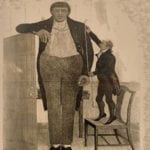 Technology
Technology  Technology
Technology  Humans
Humans 10 Everyday Human Behaviors That Are Actually Survival Instincts
 Animals
Animals 10 Animals That Humiliated and Harmed Historical Leaders
 History
History 10 Most Influential Protests in Modern History
 Creepy
Creepy 10 More Representations of Death from Myth, Legend, and Folktale
 Technology
Technology 10 Scientific Breakthroughs of 2025 That’ll Change Everything
 Our World
Our World 10 Ways Icelandic Culture Makes Other Countries Look Boring
 Misconceptions
Misconceptions 10 Common Misconceptions About the Victorian Era
 Mysteries
Mysteries 10 Strange Unexplained Mysteries of 2025
 Miscellaneous
Miscellaneous 10 of History’s Most Bell-Ringing Finishing Moves
 Technology
Technology Top 10 Everyday Tech Buzzwords That Hide a Darker Past
 Humans
Humans 10 Everyday Human Behaviors That Are Actually Survival Instincts
 Animals
Animals 10 Animals That Humiliated and Harmed Historical Leaders
Who's Behind Listverse?

Jamie Frater
Head Editor
Jamie founded Listverse due to an insatiable desire to share fascinating, obscure, and bizarre facts. He has been a guest speaker on numerous national radio and television stations and is a five time published author.
More About Us History
History 10 Most Influential Protests in Modern History
 Creepy
Creepy 10 More Representations of Death from Myth, Legend, and Folktale
 Technology
Technology 10 Scientific Breakthroughs of 2025 That’ll Change Everything
 Our World
Our World 10 Ways Icelandic Culture Makes Other Countries Look Boring
 Misconceptions
Misconceptions 10 Common Misconceptions About the Victorian Era
 Mysteries
Mysteries 10 Strange Unexplained Mysteries of 2025
 Miscellaneous
Miscellaneous 10 of History’s Most Bell-Ringing Finishing Moves
10 Real-Life Gentleman Criminals
A certain brand of lawbreakers have their own resolute code of morals, act without malice, and possess an air of sophistication that contrasts with ordinary criminals. Fiction is full of these types, such as the famed A. J. Raffles, who plays cricket and detests violence yet sees no problems with his own crimes. Yet these characters also exist outside the pages of books and movies.
10James Freney

Known as the Irish Robin Hood, James Freney unabashedly stole from the wealthy and helped the poor. Throughout the 1740s, he was a plague on every tax collector and coach that dared travel the roads of Ireland’s County Kilkenny. Still, he did live by his own law: “Rob only those who are worth robbing.”
Like every true gentleman criminal, Freney relied on his wits to avoid capture and insisted his gangs adhere to a thieves’ code of honor, which included remaining courteous, returning goods if they held sentimental value or the victim needed them, and assisting the poor whenever possible. Even so, he was a first-class marksman and never feared getting into a brawl if someone crossed him.
In many ways, the circumstances in Ireland drove Freney, once a pub owner, into a life of crime. At the time, Ireland was suffering under England’s Penal Laws, which intentionally kept the Irish out of a variety of professions. These repressive regulations forced Freney to close down his pub and saddled him with so many taxes that he had little choice but to look outside the law to make ends meet.
This pock-faced, scrappy highwayman became a champion of the common man and committed some of the most daring heists ever to occur in the area—all in five short years. He was captured in 1749 and narrowly escaped going to the gallows when officials realized that in all his exploits he had never killed a single person.
Later, Freney wrote an autobiography of his adventures, modestly omitting all the times he had helped people pay their rent, loaned money, or otherwise supported the poor.
9William Simon Jacques

The thief William Simon Jacques operated in the genteel world of rare books, manuscripts, and maps. The former accountant and Cambridge graduate has a genius-level IQ. During his days as a bandit, he presented himself as a polite, well-educated man who liked spending his free time in libraries. This innocent, academic persona initially kept folks from realizing he was more interested in stealing books than reading them.
Jacques began pilfering books in the 1990s, around the time he was finishing his degree at Cambridge. The Cambridge Library noticed some of their books went missing, yet they didn’t report the thefts, ashamed at having failed as caretakers of the treasures. Then, in 1996, when two copies of Newton’s Principia Mathematica went missing along with Galileo’s Sidereus Nuncius (worth over $500,000 combined), the library decided it could no longer keep silent.
Still, it took a while for authorities to figure out Jacques was the culprit. He continued to frequent libraries throughout the UK, courteously chatting with desk clerks while squirreling precious books under his tweed coat.
Finally, a library worker caught him in the act, and from there, it didn’t take long for police to pin him as the serial antiquarian book thief. He was jailed in 2002 and spent four years behind bars. Then, upon his release, he picked up right where he left off. He concealed his identity with false names and disguises, winning librarians’ confidences with his intellect. By this point, he had made off with over $1 million in books, and his famous exploits caused the media to dub him the “Tome Raider.”
He managed to slip through the hands of police until July 2010, when he was caught and sentenced to another three and a half years in prison.
8Elias Whitcomb
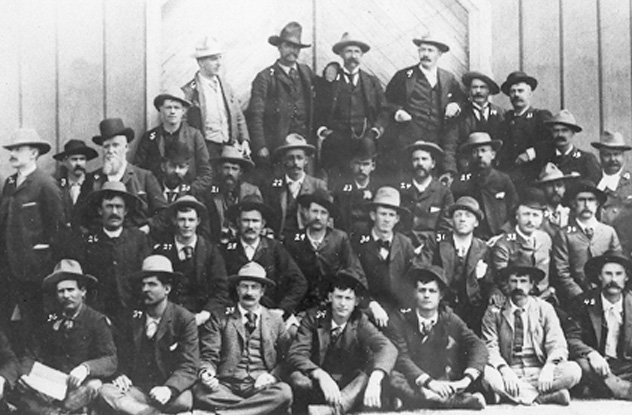
Whether Elias Whitcomb was genuinely a man of honor or was just good at playing one is a matter of debate. Unlike the other men on this list, he most likely killed people, as he was an organizer and participant in the deadly 1892 Johnson County War. Despite this, folks said he had a pleasant presence and was an innate gentleman. Today, he is recognized as one of the town fathers of Fort Collins, Colorado, and his name even appears in the Cowboy Hall of Fame.
Whitcomb ran with some of the roughest men in the Old West, including the ferocious “Jack” Slade, who earned a reputation for hanging horse thieves and stage robbers on sight. Among such rough-and-tough company, Whitcomb was considered the moral compass of his posse and often pointed out the good characteristics in what seemed like deplorable men.
During the Johnson County War, he led a vigilante group of wealthy investors and cattlemen against homesteaders rustling cattle from the big ranchers. There’s some argument over whether the ranchers exaggerated the homesteaders’ thievery, and Whitcomb and his men were never prosecuted for their vigilante actions and the resulting deaths. Whitcomb later became a powerful rancher himself and helped start the Agricultural Colony that became Fort Collins.
If Whitcomb wasn’t as gentlemanly as he appeared, perhaps his karma caught up with him in the end. He was killed by lightning in 1915.
7Peter Scott
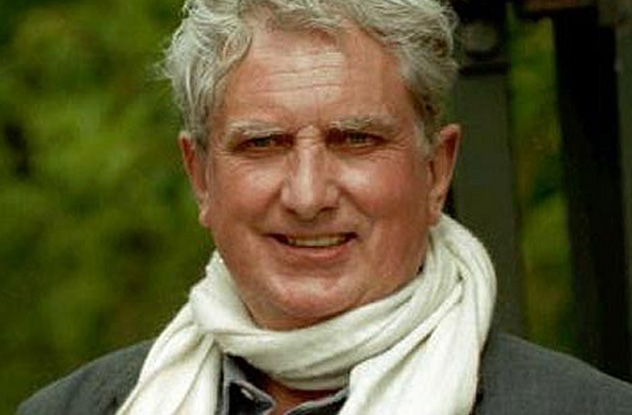
Peter Scott was something of a contradiction. He lived a life of luxury yet held contempt for anyone in the upper crust of society. He had a self-described “obscene passion for larceny” and figured robbing the ultra-rich was the best way to fulfill his desires. Scott seemingly had no compassion for his victims, saying, “The people I burgled got rich by greed and skullduggery. They indulged in the mechanics of ostentation—they deserved me, and I deserved them.”
Born in 1931, Scott was an accomplished thief by his teens. He started out by robbing wealthy homes in Belfast and eventually spread his enterprise to various hot spots of the rich and famous, including the French Riviera.
Before each heist, he would don a new suit and then use Spiderman-like skills to scale walls and drain pipes to access homes. Once inside, his clothes and debonair manners disguised him as someone who belonged in the house, such as a staff member or guest. In one break-in, the lady of the house appeared at the top of a staircase. Scott calmly shouted up to her, “Everything’s all right, madam,” and she went back to bed thinking he was the butler. Other times, if he accidentally roused the home’s occupants, he would say something like, “It’s only me,” and then go back to his thievery unquestioned.
Using these methods, he stole jewels, fur, and artwork worth more than $50 million. Some of his most famous marks were Zsa Zsa Gabor, Lauren Bacall, Elizabeth Taylor, and Sophia Loren. Having completed over 100 successful thefts, he became known as the “King of Cat Burglars,” “Burglar to the Stars,” and the “Human Fly.”
After multiple stretches in jail and flitting his money away on luxury cars, mansions, and women, Scott’s last days were spent broke and living in one of London’s roughest neighborhoods. Nevertheless, he always maintained an air of sophistication and was often seen bicycling around the city with his white, silk neck-scarf flapping in the wind.
6James Howze

Although James Howze didn’t last particularly long as a bank robber, his dedication to maintaining a dashing appearance made him something to remember. Even the FBI referred to him as the “Debonair Bandit.”
He started holding up Chicago banks in November 2008 and was caught two months later. Still, he managed to complete at least five robberies and showed up to each one impeccably dressed. In every case, Howze sauntered into the bank wearing a brown overcoat, a matching hat, and a matching scarf and leather gloves. A mask would have cramped his style, so he demanded the money with his face totally exposed. Once the tellers handed over the cash, he placed it in his coordinated black leather briefcase and then walked out the door and disappeared into the crowd.
The FBI released photos of Howze obtained from bank security footage. After tips from the public poured in, they had little trouble tracking him down. Howze was promptly arrested and sentenced to over five years in prison. Newspaper reports do not mention how he’s managing to accessorize his orange jumpsuit.
5Bill Carlisle
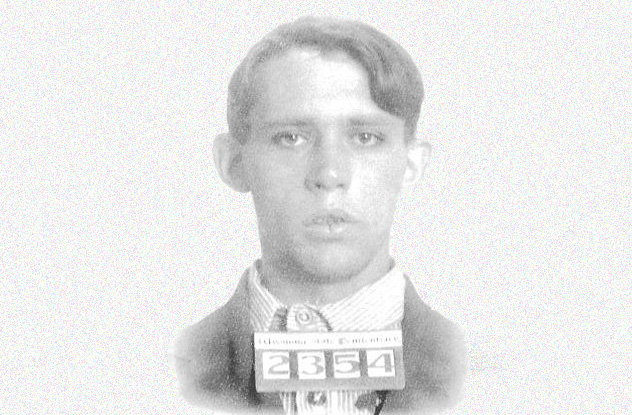
Bill Carlisle was one of the last great train robbers of the American Old West, a career he took up on something of a whim. He’d been an orphan most of his life and spent his teenage years riding trains, working in the circus, and performing other odd jobs. In February 1916, he found himself in Wyoming with no prospects and only a nickel to his name. What he did have, however, was a gun. At that moment, he decided robbing a train was his best chance at making it through the spring.
Carlisle’s first holdup played out like a movie scene. He sneaked onto the train and fired a warning shot into the roof to prove it was a legitimate robbery (there were some doubters). With a white bandana covering his face, he swiftly gathered the loot, tossed a few coins to the porter to make up for lost tips, and gave a man a further silver dollar to pay for his breakfast. He made his exit by sidestepping a woman who tried to grab his gun, giving her a bow before leaping from the train. He was nearly tangled up under the train’s moving wheels, yet he survived the jump unscathed and $52 richer.
The “White Masked Bandit,” as he was then known, didn’t stop with that one heist. He robbed Union Pacific Railroad several more times until they eventually offered a $6,500 reward for his capture, dead or alive. Motivated by the large reward money, a posse caught him in May 1916, and Carlisle was sentenced to life in prison. He later escaped, was recaptured, and then was paroled in 1936 for good behavior.
Like other gentleman thieves, Carlisle had a moral code. He never hurt anyone and never stole from women, children, or servicemen. In one of his capers, he was attempting to rob a train when he realized it was full of soldiers returning from World War I. He let the men keep their money and claimed that he would have fought alongside them had he not been in prison at the time.
4Lon Perry

In the late 1980s and early ’90s, Lon Perry was what most would consider a model citizen. He was a churchgoing father of two, had been married for 26 years, and barely had a traffic ticket to his name. People described him as having Cary Grant manners, and if it weren’t for one pesky habit, he would have indeed been a man above reproach. That habit was a doozy (criminally speaking)—he had committed armed robbery over 100 times and showed little sign of slowing down.
What led a seemingly upstanding person into a life of crime? According to Perry, he was simply trying to pay his bills. Perry lost his 22-year job in the oil industry after the 1980s energy bust. His fiscal and mental life went into a downward spiral. Besides being 50 years old (typically not the easiest age to start a new career), he also owed years of back taxes to the IRS, was several months behind on his mortgage, and was trying to put his son through college. He said this “financial pressure cooker” left only two options: suicide or thievery. He chose the latter.
In 1989, Perry began serially robbing business travelers in expensive hotels throughout Louisiana and Texas. Still, his good manners never waned. He was known for apologizing as he tied people up and always tried to make victims as comfortable as possible. He’d return pictures that he found in wallets and would call the hotel front desk after the ordeal to let staff know a person needed help getting untied. In one instance, a man had a heart attack during the robbery, and Perry called him an ambulance and later phoned his house to see if he was okay. Even though he coerced his victims with a gun, the hammer was frozen and couldn’t actually fire.
He might have gotten away with the crimes, but, being a forever gentleman, Perry turned himself in after another man was pegged as the “hotel thief.” Perry said he simply couldn’t let someone get punished for what he had done. In 1991, Perry was sentenced to 35 years in prison.
3Johnny Torrio
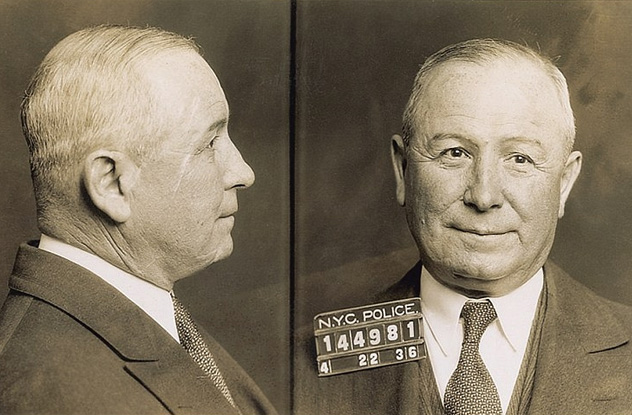
Johnny Torrio, a Chicago crime boss in the 1920s, was one of the most successful gangsters on the East Coast. He was small and smart, and he learned early that negotiations and alliances were generally more effective than violence.
While Torrio showed no shame in racketeering, he downplayed his more lurid enterprises, such as keeping brothels. Torrio considered himself a man of honor, stressing the importance of living an outwardly respectable life and keeping his home and work lives separate. In fact, he was so upstanding that he became a role model for many boys in his community, as he regularly paid them pocket money to run errands. Overall, his wholesome private life enabled him to rationalize away his criminal activities.
Torrio was never one to get in the middle of violence (however, it is said he paid others to murder his rivals), so after getting shot and wounded, he decided to get out of the mob business. He handed his empire over to Al Capone, yet he still couldn’t bring himself to go straight. He kept busy in his later years with bootlegging, real estate, and supposedly organizing the National Crime Syndicate in 1934.
Eventually, he went to prison for tax evasion and later died of a heart attack in a barber chair. Still, he is forever known as one of the founders of organized crime in America, who somehow pulled it off while remaining an outwardly decent family man.
2Bill Miner
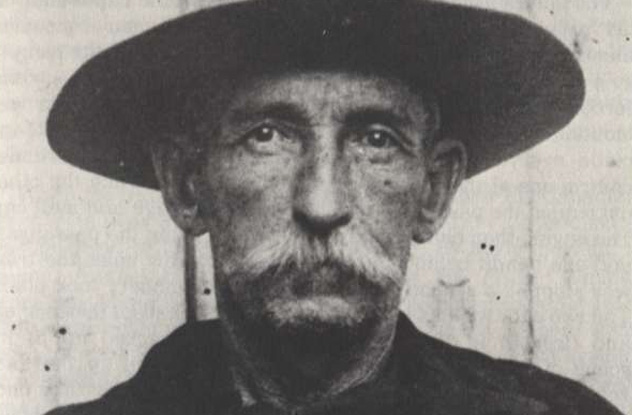
In many ways, Bill Miner epitomized what it meant to be an Old West outlaw. He was a true highwayman, robbing everything from stagecoaches to trains, and he squandered most of his loot in dusty saloons and dance halls. Except, unlike other outlaws, he wasn’t known for spittin’ or cussin’ or gun-slinging but was instead recognized for his politeness and soft-spoken nature. In fact, after his death, a major newspaper ran a four-column story on Miner, describing him as a “kindly, lovable old man, whose thoughts were humorous, whose manner was that of one who was a friend to all humankind . . . the most courtly, the most kindly spoken, the most venerable man . . . one whom they all regard with affection and something of esteem.”
Those endearing words refer to a known robber who had a 45-year criminal career. Miner had secured that soft spot in so many people’s hearts by stealing almost entirely from corporations, feeling that they robbed the common man. Many agreed, and he became a folk hero in both the US and Canada.
On the occasions when Miner had to steal from an ordinary person to, say, facilitate his way out of town, he often made a point to return at least part of what he had taken. For instance, on one occasion, he stole $80 from a ranch hand and then later returned $10. In another instance, he robbed a driver of $5, his watch, and boots, yet was considerate enough to return the watch and boots after he finished with them. According to legend, he was also the first to say “put your hands up, and nobody gets hurt.” These types of thoughtful acts earned him the nickname “the Gentleman Bandit.”
Miner had an uncanny ability at thievery and recruiting a steady stream of accomplices. What he wasn’t so great at, however, was evading capture. He went to prison seven times, escaped four of those times, yet still spent a total of 35 years behind bars. His criminal career, which spanned between 1865 and 1911, was the longest of any Old West outlaw, even surpassing the legendary Jesse James.
1Charles Earl Boles (Black Bart)

Shortly after the Civil War, Charles Boles, a former First Sergeant in the Union Army, was happily scraping away a living as a gold miner when he was forced off his land by Wells Fargo. According to one account, Wells Fargo offered to buy Boles’s property, and when he refused, they cut off the water supply to his land—effectively shutting down his mine.
Boles was infuriated and cryptically wrote a letter to his wife saying he was going to take revenge against the bank. While he never explained the specifics of his vengeance, we can assume this is when his alter ego, Black Bart, was born.
From then, Black Bart had it out for the bank and subsequently robbed their stagecoaches 28 times. Still, he kept things civil, never physically harmed anyone, and stole strictly from Wells Fargo and never from passengers. The bank even described him as being non-vicious and “polite to all passengers, especially to ladies.”
Amazingly, he traveled on foot to and from robberies and carried a shotgun so old that it couldn’t shoot (he didn’t even bother loading it). Although he always worked alone, he would often prop up sticks on nearby boulders to make it look like he had a posse of men standing by.
Occasionally, he was thoughtful enough to leave poems behind—Wells Fargo was not amused. His last poem read:
Here I lay me down to sleep
To await the coming morrow
Perhaps success, perhaps defeat
And everlasting sorrow
Let come what will, I’ll try it on
My condition can’t be worse
And if there’s money in that box
‘Tis munny in my purse.
Black Bart’s unique style and sophistication made him a hero in California (except to Wells Fargo), and it took over a decade before he was finally tracked down by Pinkerton Detectives. He went to San Quentin Prison for four years and was released early, in 1888, for good behavior. He disappeared shortly after and was never seen again.
Content and copy writer by day and list writer by night, S. Grant enjoys exploring the bizarre, unusual, and topics that hide in plain sight. Contact S. Grant here.




